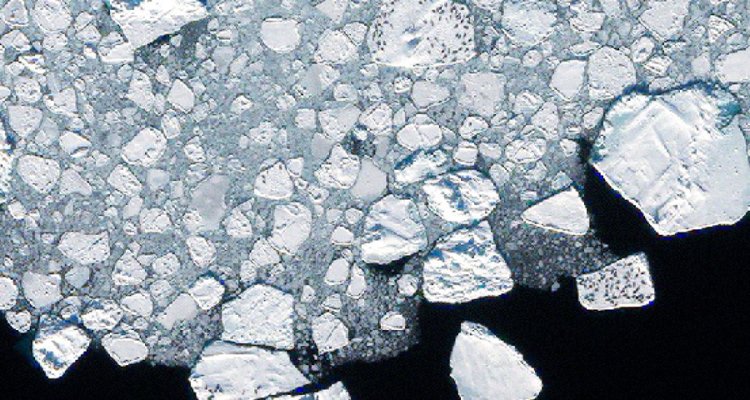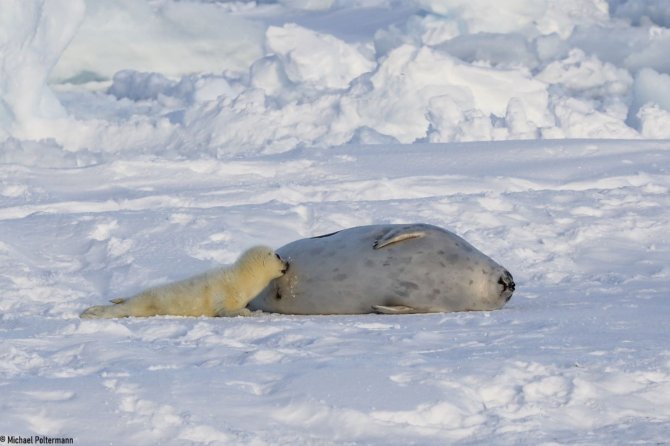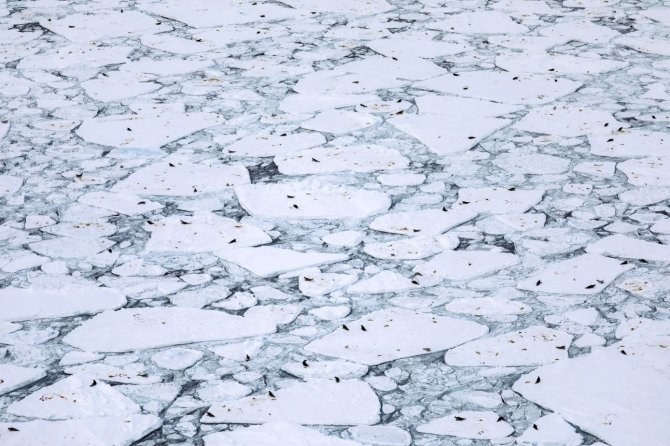
News
Arctic seals photographed from space
Around this time of year, the Arctic would normally be slowly awaking from its deep winter slumber. This year however, the annual ice melt started sooner than usual. Record breaking heat waves in both Polar regions – reaching up to 40C above normal in some places – made headlines last month. Future perspectives look grim as well: it is predicted that the Arctic will be free from sea-ice in Summer as soon as 2035. As part of a study into the effect of this disappearing sea ice on seals in the Arctic, researchers from NIOZ and Wageningen Marine Research have now for the first time managed to collect satellite images of Arctic seals, allowing better monitoring of this hard-to-reach species.
The disappearance of the sea-ice could spell disaster for hooded seals – known for the peculiar red balloon-like sac that adult males can inflate from their nostrils – and harp seals. Both species use the sea-ice for resting, moulting and giving birth to their pups, which have been hunted extensively for their flawlesscoats. Currently, an estimated 650,000 hooded, and a staggering 7.6 million harp seals inhabit the Arctic. These population estimates however, are surrounded by large uncertainty margins.
This year, for the first time since 2018, a large-scale census was made east of Greenland, in an area where huge groups of hooded and harp seals gather during the pupping season. Finding the seals is extremely challenging, as the sea-ice continuously moves due to currents and winds. In March a team of Norwegian scientists (Institute of Marine Research) meticulously searched the area, using a large ship, drones and a helicopter. Additionally, an airplane departed from Greenland to make reconnaissance flights, searching for seals. Whenever large aggregations of seals were discovered, special GPS beacons were deployed on the sea-ice to track the colony. After the researchers felt confident that they had located most major seal haul-outs, the seals were photographed from the plane using the GPS beacons as a guide. By counting the pups in these photos, the population size can be estimated.

Aided by the observations of the Norwegian team, researchers from the Royal Netherlands Institute for Sea Research (NIOZ) and Wageningen Marine Research have now succeeded to obtain photographs of these enigmatic species from space for the first time. The obtained satellite images were provided by space technology company Maxar, and have a 30 cm resolution, meaning that an A4 sized object can be detected, even though the satellite is flying at a height of over 600 km.
With the disappearance of the sea ice, the haul out sites are expected to move, making it even more challenging to locate the seals. By collecting these unique images, the researchers have shown that it is possible to detect and count hooded and harp seals from space, which provides new opportunities to survey larger areas in the remote and inaccessible Arctic. Next, they hope to automate this process using the latest AI techniques, thereby providing a valuable tool to monitor seal populations and study the effects of the rapidly disappearing sea ice.
